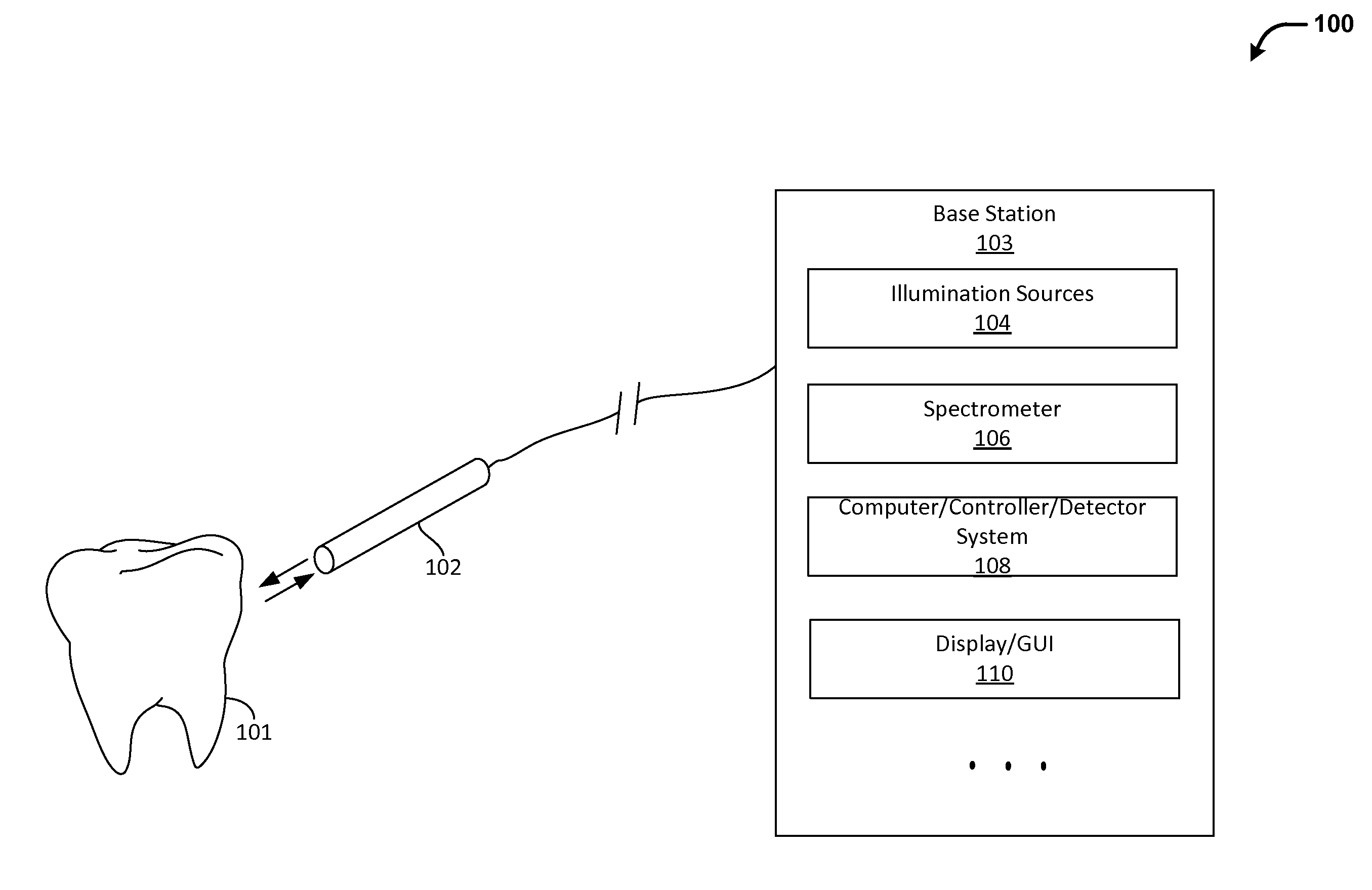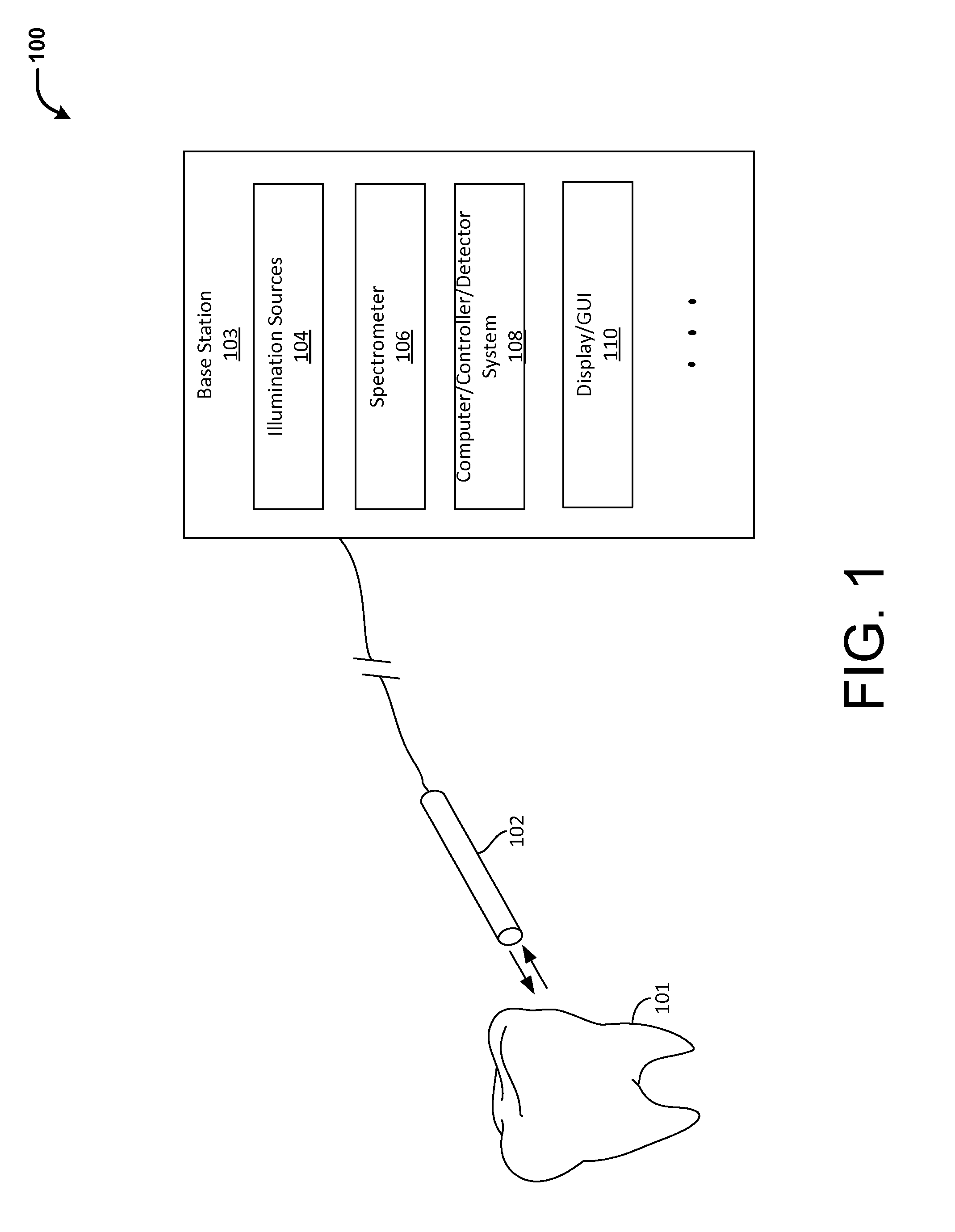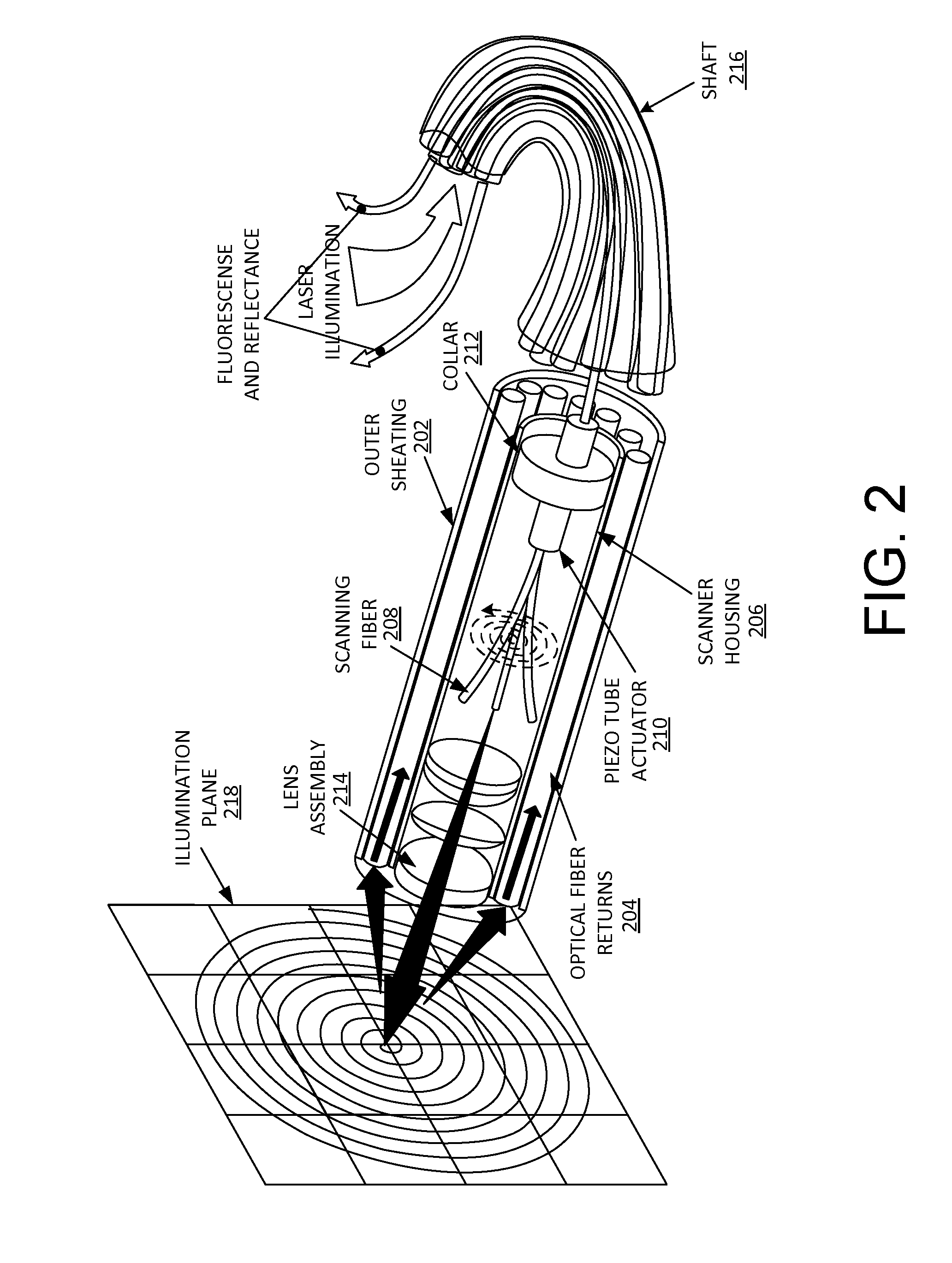Dental demineralization detection, methods and systems
a demineralization and demineralization technology, applied in the field of demineralization detection, methods and systems, can solve the problems of serious damage, enamel demineralization, and need a more invasive filling, and achieve the effect of improving reliability
- Summary
- Abstract
- Description
- Claims
- Application Information
AI Technical Summary
Benefits of technology
Problems solved by technology
Method used
Image
Examples
example
[0107]Dental autofluorescence (AF) is based on the presence of endogenous fluorophores residing in the enamel and has been shown depend on excitation wavelengths. In some cases, dental AF behaves as a fluorophore in a rigid solvent environment, and is therefore dependent on the fluorophore / solvent microenvironment. This leads to emission shifts to longer wavelengths for longer excitation wavelengths on the red-edge of the fluorophore absorption band.
[0108]In an example described below, a simple and robust AF ratio method was developed to discriminate between sound enamel and different stages of early stage caries lesions. See also, “Optical Measure of Enamel Health,” Zhang, et al., 2012 IEEE Global Humanitarian Technology Conference, which is hereby incorporated by reference. Quantitative fluorescence measurements of dental specimens were obtained using 405 nm and 532 nm laser excitation. Fluorescence from sound and early stage natural lesions was obtained and the two fluorescence s...
PUM
 Login to View More
Login to View More Abstract
Description
Claims
Application Information
 Login to View More
Login to View More - R&D
- Intellectual Property
- Life Sciences
- Materials
- Tech Scout
- Unparalleled Data Quality
- Higher Quality Content
- 60% Fewer Hallucinations
Browse by: Latest US Patents, China's latest patents, Technical Efficacy Thesaurus, Application Domain, Technology Topic, Popular Technical Reports.
© 2025 PatSnap. All rights reserved.Legal|Privacy policy|Modern Slavery Act Transparency Statement|Sitemap|About US| Contact US: help@patsnap.com



